The Spirits #11: The Avenue
~ The Café Royal Set ~ Bottom Party ~ Is it now, Maurice? ~ Oh! No ~ 64 Years of McCartney ~
~ THE AVENUE ~
50ml bourbon
25ml passion fruit pulp (i.e. one fruit)
5ml grenadine
Dash orange flower water.
Introduce everything to your shaker - hi! - scraping out the passion fruit with a spoon, seeds and all. Add half a trayful of ice and shake it, sh-sh-shake it… then strain it out into your cocktail glass via a tea-strainer/sieve to catch all the passion gunk. Garnish with whatever you have lying around that looks pretty - the fact that I had eucalyptus in my kitchen is entirely coincidental.
Some Avenue pointers:
1) Let it be known that this is a simplified version of the original recipe. If you keep a well-stocked cellar, you might try the original formula of 25ml bourbon and 25ml calvados/apple brandy as opposed to alllllll bourbon.
2) Grenadine! Either buy a half-decent brand, or (better) make your own. Seems compliqué but all grenadine is, really, is sugar syrup made with pomegranate juice instead of water. I made mine with a one cup of POM Wonderful (100% pomegranates, no funny business) and two cups of caster sugar, warming to dissolve, while holding a wriggling baby. It took me three minutes. A slightly more in-depth recipe is here, in my extremely useful ‘Preparations’ section.
3) An English supermarket passion fruit, as a general rule, yields about 25ml of pulp.
4) I guess you could omit the orange flower water but it sort of makes the cocktail. It’s also a nice thing to have around the kitchen; the French use it in crepes and cakes; the Moroccans add a dash to their orange juice; and the New Orleanians use it in their famous gin fizz. Use it like bitters, i.e. tiny amounts.
Please continue to sanitise your hands. Some sweet street MUSIC. And welcome!
LAST WEEK, if you recall, we ended up in the Savoy’s American Bar beneath a flotilla of White Ladies. I don’t know about you, but I have spent the intervening week sauntering down the Strand, circumambulating Trafalgar Square, avoiding the clubs of Pall Mall before leisurelily(?) trickling up Haymarket in the direction of the Café Royal. I might have slipped into the National Gallery; I don’t recall, it has been a long week, the decades all blur. I’m sure I spent at least a part of it chronically stressed amid some dystopian future pandemic? But here we all are now, right by Piccadilly Circus, safely glittering in the domino room, as painted by Charles Ginner in 1911. Aleister Crowley, Muhammad Ali, Brigitte Bardot, Walter Sickert and Virginia Woolf are at neighbouring tables. That wasn’t…? Ah but I could have sworn it was the Queen of Bohemia herself. Oh look, and here comes Tarling with our Avenues.
🍸
The Café Royal is the less feted London hotel - but it not only predates the Savoy (it was founded by French wine merchant Daniel Nicholas Thévenon in 1865), it has a much loucher history. It was at the Café Royal that the 9th Marquis of Queensberry spied his son, Lord Alfred Douglas (aka Bosie) dining with Oscar Wilde; this was the scandal that precipitated Wilde’s incarceration and torture at the hands of the Victorian establishment. It was also at the Café Royal that David Bowie celebrated killing off Ziggy Stardust in 1973. Here he is savouring the moment with Lou Reed.
The Savoy was classy, state-of-the-art; the Café Royal was bohemian, and (prior to the First World War at least) a gaudy, glitzy, cheap-drinks sort of place. "The lights, the mirrors, the red plush seats, the eccentrically dressed people, the coffee served in glasses, the pale cloudy absinthe ... I felt as if I had strayed by accident into some miraculous Arabian palace,” recalled Betty May, singer, artists’ model who hung out there with the painter Augustus John, the sculptor Jacob Epstein and the anti-fascist heiress Nancy Cunard. “No duck ever took to water, no man to drink, as I to the Café Royal" said May. I highly recommend falling down a Café Royal Set rabbit hole, by the way, especially if you’ve much more pressing things to do. One of its members was the Anglo-Irish prankster Horace de Vere Cole. He once hosted a party where it only dawned on the guests halfway through the evening that the sole reason they had been invited was because their names contained the word ‘bottom’.
Oh and the Café Royal Cocktail Book (1934) is also a much better cocktail book than the more famous and influential Savoy Cocktail Book (1930). The latter has never been out of print; but the former only exists in facsimile form (and, happily, the internet). It was compiled by William J Tarling, who was the head bartender between the wars when the Café Royal classed itself up a bit - and its wild and wonderful drinks are little postcards of the era. It’s particularly notable for its tequila recipes - including the Picador, a proto-Margarita, published decades before the drink caught on. And otherwise, it’s full of fun ingredients like ‘Pash’ and green curacao and creme de banane - not to mention avant-garde mixtures like the Twentieth Century: gin, lemon juice, Lillet Blanc and creme de cacao.
All this freshness and novelty was perfectly in keeping with the times. In her book English Food (1991), the food historian Lady Arabella Boxer (grandmother of the acclaimed chef Jackson Boxer) conjures the inter-war years as a great lost flowering of English culinary imagination. “The English are a strange mixture of compacency and insecurity, for they genuinely don’t seem to value their own culinary inheritance,” she writes. Between the Armistice and the onset of rationing in 1940, there was a “discreet revolution” in English eating, especially among the young: Edwardian stuffiness discarded, American innovations embraced. Meals became more informal but more elegant too; fresh green vegetables became le dernier cri; lean, modern dishes took on names like Haddock Monte Carlo, Garden Nectar and Crayfish Gloucester. And “the fashionable young folk of London became addicted to cocktails almost overnight.” At your average aristocratic party, Boxer points out, these were likely to be abominably prepared and served lukewarm. But if you were drinking at one of the great London hotel bars… well, you were in luck.
The Avenue, for me captures all that. It’s an elegant road leading to nowhere in particular, a combination that’s both demurely elegant and a hot mess, artfully artless. I mean why calvados and bourbon? Was that peculiar combination of flesh and aroma arrived at after careful experimentation - or did the drink’s creator, Crompton, simply bung everything in the glass? Ah who cares, it tastes delicious. The Café Royal is still there by the way, luxxy in the internationally bland way of the class that can afford that sort of lifestyle nowadays, oddly reticent about its storied past and prime location. But it’s still kind of a kick, ordering from the book, and sipping as all of the LEDs of the Piccadilly Circus hoardings blink and wave outside.
PLAYLIST
Avenues, main streets, highways, byways, shady lanes, grand boulevards. I hope, as ever, that my natural inclination towards melancholia doesn’t kill the mood. The Russian song is by Bulat Okudzhava, my favourite of the Soviet-era bards, and it’s about the Arbat in Moscow.
OFFER!
Online alcohol shop The Drop Store is giving readers of the Spirits a discount. Head HERE, have a mooch and if you add thespirits10 (i.e. lowercase!) in the promo code you will get 10% off at checkout.
A SELECTED LIST OF LOST COCKTAILS
There is a useless but charming appendix at the end of the Café Royal Book, in which Tarling provides a ‘Supplementary List’ of some of the 4,000 cocktails he considered for the book - but which didn’t make it. Many are well known: the Army & Navy and Clover Club, for example. But most are lost. What did they contain? Who drank them? We can only begin to imagine. Selected highlights:
Air Is Blue
Baby Titty
Big John
Blythe, Samuel G.
Bravo 1935
Coo-ee Special
Dog’s Pants
Ethel
Frantic Atlantic
Fuzzy Wuzzy
Gin and Gin
Infuriator
Journey’s End
Load O’ Mischief
Mighty Atom
Oh! No
Replica
Short Life
Strike’s Off
Tallulah Pash
Top and Bottom
Vagabond’s Dream
Waldorf Gloom Lift
White Elephant
Why
Zit
WHAT I’M READING
64 Reasons to Celebrate Paul McCartney by Ian Leslie (Substack)
The Best of Brexit by Marina Hyde (Guardian)
Brexit: Was it Worth it? by Ed West (Unherd)
And I actually read it a while ago, but all of the above reminded me of Frances Partridge’s A Pacifist’s War, Diaries 1939-1945 - a perfect lockdown companion. Partridge was a member of the Bloomsbury group, in a complicated love-quadrangle with her husband Ralph Partridge, Lytton Strachy and Dorothy Carrington, and a pacifist at a time when explaining that was hard. She was also the most wonderful diarist and her day-by-day account of war vibrating her country house idyll is - well, I broke off writing that sentence to order myself another copy. Great recipes, too.
SHOPPING LIST
OK how do you feel about adding light rum to proceedings? I promise you, you will not regret it. Havana 3 Year, El Dorado 3-year, Flor de Cana Extra Secco and (if you feel like splashing out) Dooly’s are my picks - but Bacardi Carta Blanca OK too. And then, grenadine, French vermouth and (not necessarily essential) orange liqueur.
🇨🇺

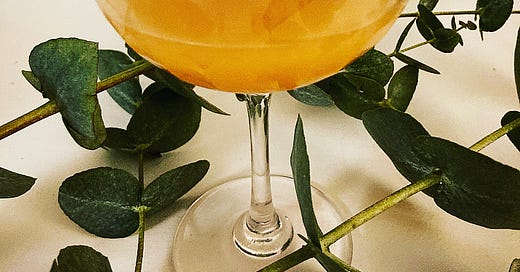



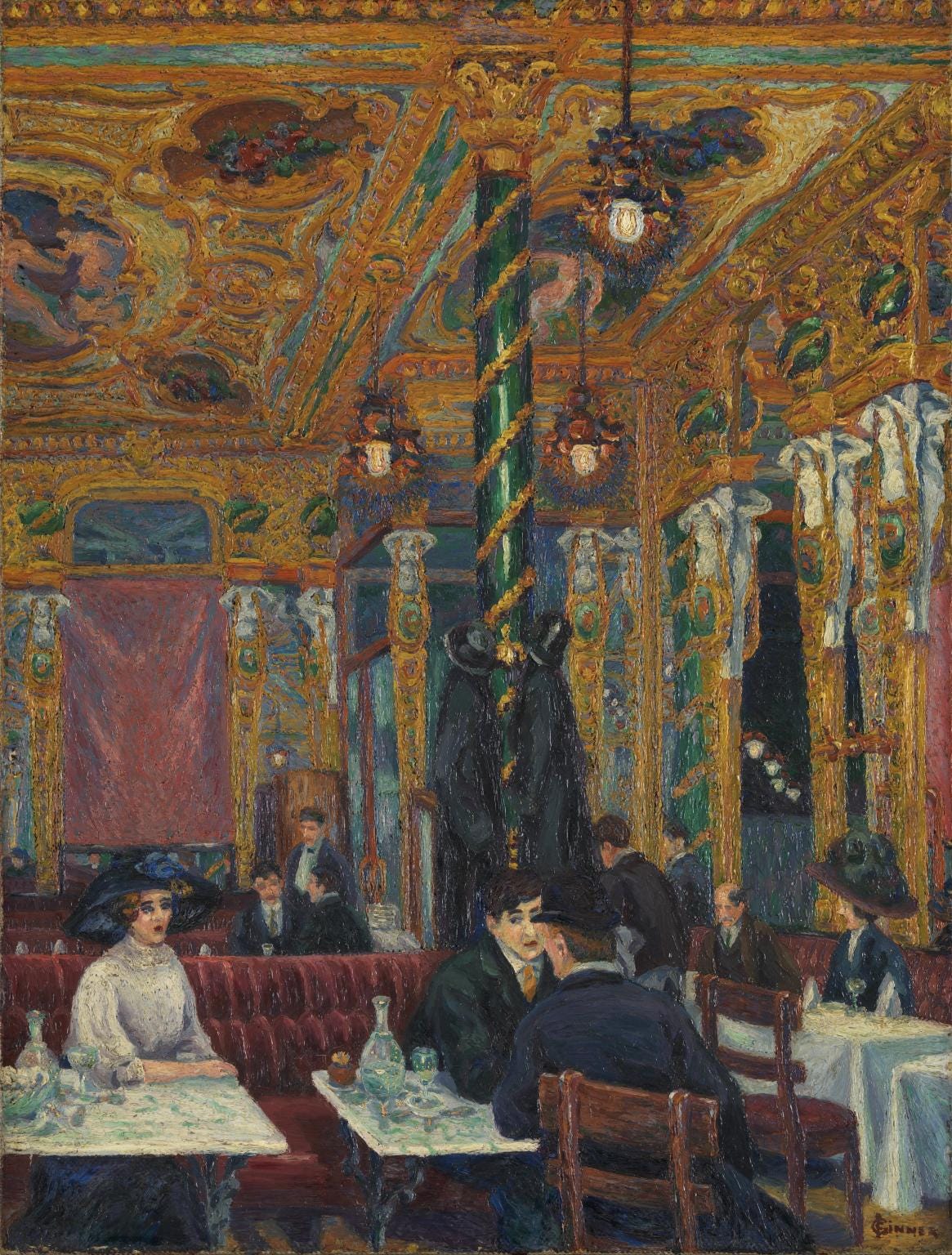
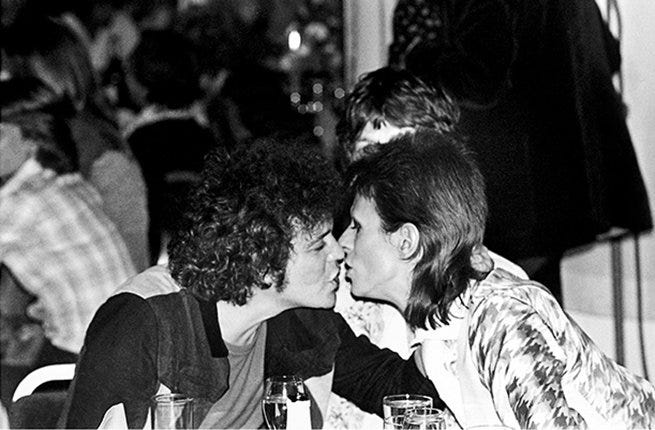
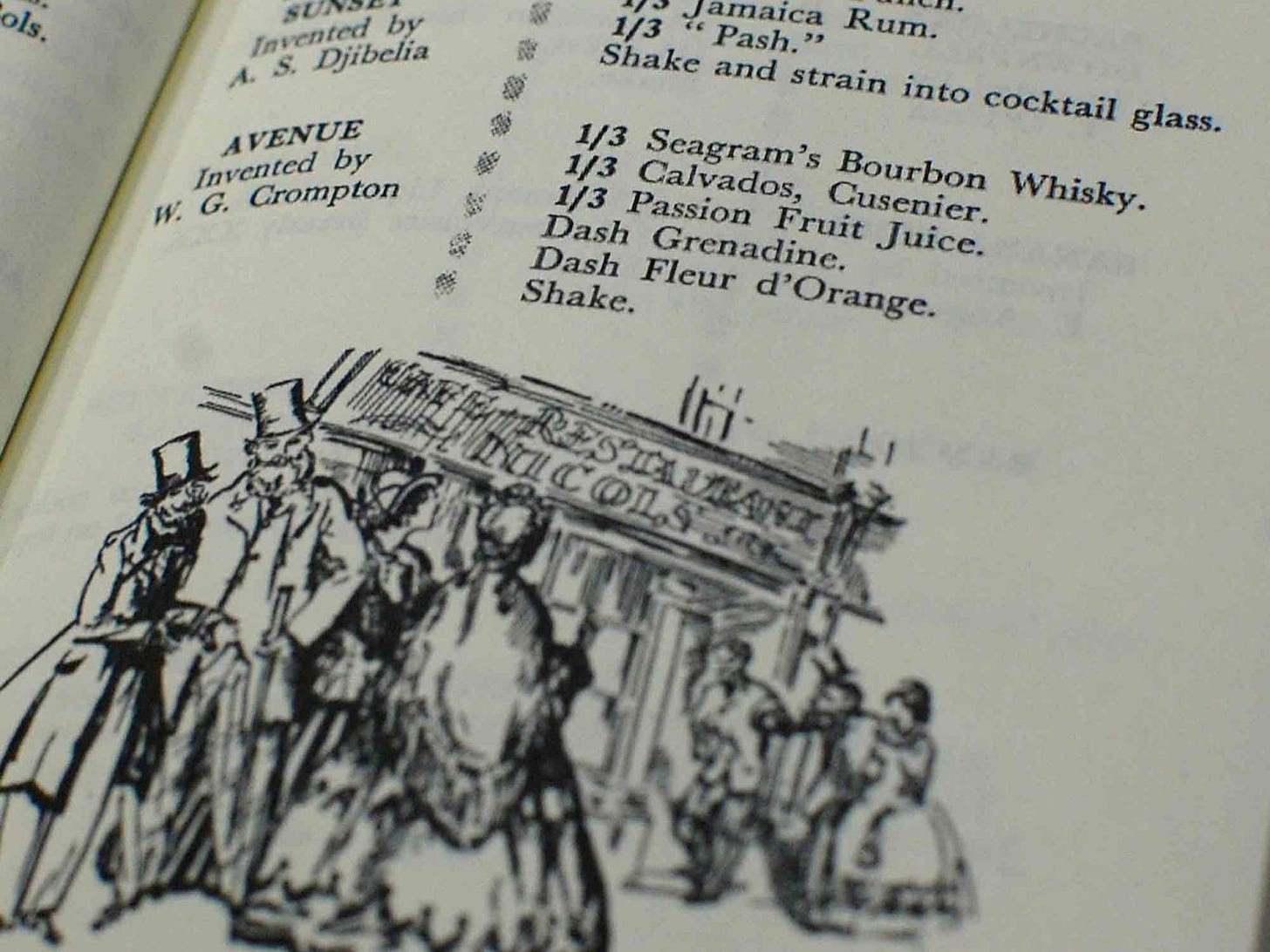
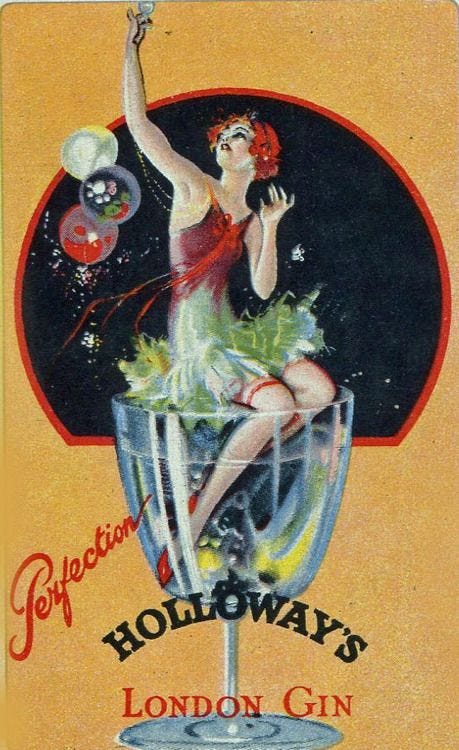
It's funny, I had never tried to make a cocktail with Grenadine, because I thought it would be too much of a hassle to make my own - and why buy when I could easily just make another cocktail that wouldn't require it?
So, this was my first time - and, of course, homemade Grenadine is no hassle at all (I used Pom, not fresh pomegranates). I made enough for this Friday, next Friday, and probably every day in between - and I am very glad, because the Avenue was a huge success here at home. We loved the perfect blend of the Bourbon with the sweetness of the Grenadine and the sweet acidity notes of the passion fruit. It's a weird mix indeed, but works really well!
Hi Bartender
I’m not having much luck trying to get passion fruit at this time of year. Nothing in Tesco’s, Sainsbury’s or M&S. Not to worry, I’ll put The Avenue on hold for a while. Interesting listening to Bruno here. I use grenadine to make Tequila Sunrise, always a p cocktail although I suppose at the Café Royal they would prefer to use grenadine to mix a Pink Lady. Personally, both of those are a little too sweet for me.
Love this playlist on 11. But thinking of streets, Tobacco Road came to mind (try Bobbie Gentry’s cover) or Ray Charles’ Lonely Avenue, Dylan’s Positively 4th Street or Bruce’s Tenth Avenue Freeze Out. But you played On Green Dolphin Street. This was a tune Miles used a lot in the late 50s, early 60s. To my mind the best work out is on Friday Night At The Blackhawk with a beautiful solo from Wynton Kelly, that was before Herbie joined the band. But if you’re into piano jazz for the bar here, you could try On the Sunny Side Of The Street from Diana Krall… recorded when she was still a jazz piano player.
Piano Jazz. OK, so I know you like bar stories so here’s one. I was in a half-full bar in Aleppo, this was before the rebellion/war in Syria, and there is a brilliant piano player improvising on some great workings of Monk, Ellington, Mingus and so on when suddenly he goes into My Heart Will Go On. As it ends there is the most applause of the evening and I notice the bar has now filled up. “I hate that tune” he says to me, “but they love it – sentimental rubbish!”. I often smile to myself at that incident but wonder what happened to that guy given events in Syria.
Stay safe now